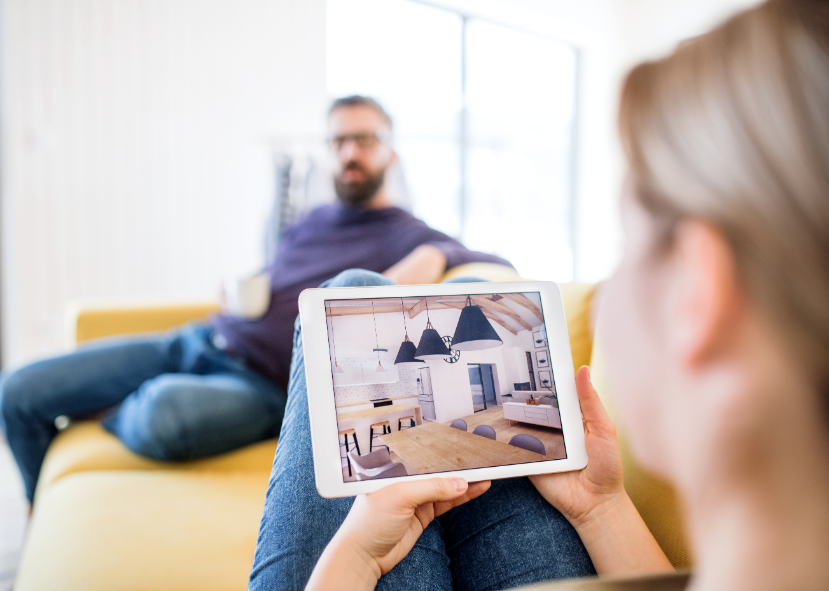

In the world of interior design, the ability to effectively sketch and render your ideas is a valuable skill set that can elevate your design process and enhance your communication with clients and colleagues.
In this blog post, we will delve into the techniques and principles of interior design sketching and rendering. We will explore the fundamental aspects of sketching, including tools and materials, various techniques such as line drawing and shading, and exercises to improve your hand-eye coordination. Additionally, we will guide you through the art of rendering, covering topics such as material representation, color theory application, and techniques for adding depth and texture to your renderings.

“Sketching is the breath of art. It is the most refreshing of all the more impulsive parts of artistic creation, to sketch, to scribble away to one’s heart’s content.” - Vincent van Gogh
In the realm of online sketching and rendering, your tools extend beyond traditional paper and pencils.
Familiarize yourself with digital sketching software and hardware options available in the market. Explore popular digital drawing tablets, such as Wacom or iPad Pro, which offer precise control and pressure sensitivity.
Additionally, become acquainted with digital sketching software like Procreate, Adobe Photoshop, or SketchBook Pro, as they provide a vast array of brushes and editing capabilities to enhance your digital sketches.
Translating traditional sketching techniques to the digital medium opens up new possibilities for experimentation and refinement. Begin by mastering the art of line drawing in your digital sketches, using different brush sizes and styles to create clean and expressive lines.
Explore shading techniques, utilizing various brush opacities and blending modes, to add depth and dimension to your digital designs. Additionally, experiment with hatching and cross-hatching techniques to convey texture and create visual interest in your digital sketches.
Even in the digital realm, honing your ability to sketch basic shapes and forms is crucial. Start by creating digital cubes, spheres, and cylinders to understand their three-dimensional properties. Focus on achieving proper proportions and perspective in your digital sketches to accurately represent interior spaces.
Familiarize yourself with the tools and features in your digital sketching software that enable easy manipulation of shapes, layers, and transformations.
Although you’re sketching digitally, developing hand-eye coordination remains essential.
In the upcoming section, we will explore the art of rendering, where we’ll dive into various materials, create texture and depth, apply color theory principles, render different materials, and add the magic of light and shadow to bring realism to your interior design renderings.

"The art of rendering is the bridge that transforms interior design concepts into vivid realities." - Mary McDonald
In the world of online rendering, understanding the different rendering materials is essential to bring your interior design ideas to life. While traditional rendering often involves physical mediums like markers, colored pencils, and watercolors, we will explore their digital counterparts in this section. Digital rendering software and tools offer a wide range of brushes, textures, and effects that mimic traditional rendering materials.
To get started, familiarize yourself with digital rendering software such as Adobe Photoshop, Procreate, or SketchUp. These programs provide a variety of brushes and settings that emulate the characteristics of markers, colored pencils, and watercolors. Experiment with different brush types, opacity levels, and blending modes to achieve desired effects.
One of the key elements in realistic interior design renderings is the ability to create texture and depth. With online rendering techniques, you can simulate the look and feel of various materials and surfaces, adding richness and realism to your designs.
Color plays a crucial role in interior design, and applying color theory principles to your renderings can elevate the visual impact of your designs. Understanding color harmonies, contrasts, and the psychology of colors will help you create visually pleasing and harmonious renderings.
Interior design involves working with a variety of materials, each with its unique characteristics. Online rendering allows you to showcase the specific qualities of different materials, such as fabric, wood, metal, glass, and more.
Lighting is a critical aspect of interior design, and mastering the art of lighting in your renderings can make them come alive. By understanding light sources, shadows, and reflections, you can create realistic and captivating renderings.

By integrating sketching and rendering into the design process, designers can enhance their creativity, effectively communicate their ideas to clients, collaborate with other professionals, and respond to client feedback with flexibility and precision.
FAQs
While breaking the rules of interior design allows for creative freedom, it's important to maintain balance and harmony in your space. Consider factors such as proportion, functionality, and visual cohesion to ensure a successful and visually appealing design.
Absolutely! Many designers enjoy blending the two styles to create a unique and balanced look. It's all about finding the right harmony and expressing your personal taste.
Absolutely! You can achieve remarkable transformations on a budget. Consider simple changes like rearranging furniture, repurposing existing items, or adding fresh coats of paint to create a new look. Look for affordable decor options at thrift stores, flea markets, or online marketplaces. DIY projects and upcycling can also add a unique touch without breaking the bank. With a little creativity, you can achieve stunning results while staying within your budget.
Related Articles